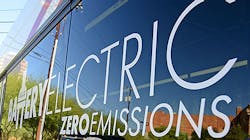TEP Working to Reduce Barriers to EV Adoption For Low-Income Communities
Tucson Electric Power's transportation electrification programs are intentionally designed to ensure everyone — including disadvantaged communities and residents — can enjoy the benefits of electric vehicles (EVs).
Transportation generates more harmful emissions than any other sector of Tucson's economy, creating disparate impacts for low-income communities near highways and major thoroughfares. So adding zero-emission EVs to the road leads to cleaner air and less noise pollution in these neighborhoods.
For now, those EVs will be driven by those who can afford their relatively high cost. But over time, their cost is expected to fall within reach of most families’ budgets. A new study on EV equity issued by Resources for the Future found that the lower costs of used EVs over the next 10 years will increase EV adoption by lower income residents. The study also indicated that, by 2029, the price of EVs will be comparable to the typical vehicle normally purchased by lower income buyers.
Beyond the purchase price, EVs are already affordable to own. Charging an EV typically costs less than filling up with gas, particularly given recent prices. With no need to change oil, replace timing belts or flush a radiator, owners also generally enjoy lower maintenance costs overall.
“As an energy provider, we want to ensure the benefits of electric transportation can be enjoyed by all of our customers,” said Camila Martins-Bekat, senior market development representative for Tucson Electric Power (TEP). “That’s why we’re working to reduce the barriers to EV adoption for customers who face the largest hurdles. We want to ensure that charging infrastructure is available in low-to-moderate income areas, making it easier for residents to transition to an EV.”
Here are some of the ways we’re advancing EV equity through incentives, strategic partnerships and stakeholder engagement:
Electrifying Public Transit
Low-income households disproportionately rely on public transportation or ride sharing to get to work or appointments. The electrification of public transit buses means riders can benefit from a clean, quiet ride without having to purchase an EV.
Through a partnership with the City of Tucson and Sun Tran that began in 2019, TEP is supporting the electrification of its local bus fleet by covering the cost of the charging stations, providing technical assistance and upgrading the local grid to support charging. The matching funds helped the city qualify for a US$ 5 million federal grant to kick start the conversion to electric buses. By 2028, all of the buses in Sun Tran’s fleet will be either battery electric or compressed natural gas.
Supporting EV Ready Communities
TEP’s incentives for EV owners include rebates on residential home chargers, as well as attractive rebates for commercial customers who install chargers either for public or employee use. Higher incentives are offered to commercial customers who install chargers in low-income areas and offer public charging to ensure lower-income neighborhoods are included in a comprehensive charging infrastructure.
TEP is installing public charging stations in accessible places, including the city’s public parking garages and local shopping plazas.
TEP also offers higher rebates for charging stations installed at multi-family dwellings to serve those who have a shared parking arrangement. “It’s more difficult to install chargers in multi-family complexes due to large parking lots, multiple entrances and other barriers that aren’t factors in single family homes,” Martins-Bekat said. “We’re interested in bringing chargers to those locations where there are more barriers to adoption.”
TEP has earmarked 30 percent of its commercial program budget to support the goal of including underserved neighborhoods in the charging infrastructure.
“Our vision is to ensure that customers of all economic levels are able to benefit from transportation electrification, whether it’s the greening of public transit or promoting the development of a robust charging network in our service territory,” said Martins-Bekat, who shared the effort in a recent video. “We want to remove barriers and increase access to make sure no one is left behind in the EV revolution.”
